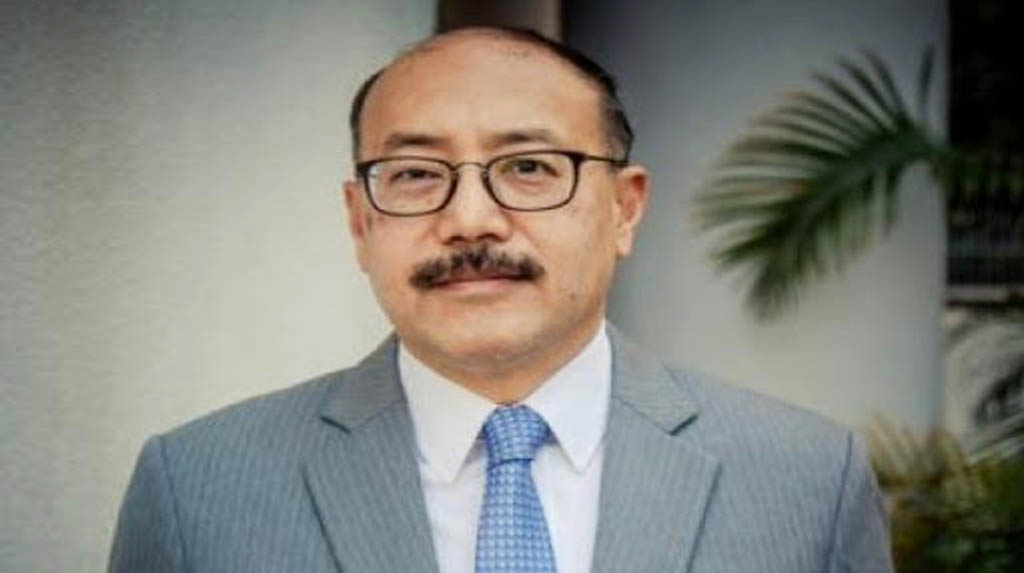Agartala/Gangtok: As the northeast region is India’s gateway to east and southeast Asia, the country has a vision for this region that is captured in the 3 Cs – Connectivity, Commerce, and Cultural Commonalities, Foreign Secretary Harsh Vardhan Shringla said.
He said that in foreign policy terms, the states of the northeast are the link between two fundamental pillars of our foreign policy: “Neighbourhood First” and “Act East”. “In partnership with our neighbours and friends to the east, we are working to improve the infrastructure and connectivity in our northeastern states while also facilitating greater regional integration,” Shringla said recently while addressing a seminar on a virtual platform.
He said that the connectivity between India and Bangladesh directly and positively impacts both the northeast region and Bangladesh. Four of the six pre-1965 rail links between the two countries have been made operational, and work is underway on the remaining two.
“Nationals of the two countries can not only travel on board the Maitree and Bandhan express to each other’s countries but on buses plying between Shillong and Dhaka and between Agartala and Kolkata via Dhaka. We are upgrading the infrastructure of Land Customs Stations (LCS) for enabling smooth cross-border movement of goods and people,” he added.
The seminar on “Self-Reliant India : Reimagining the North East India in terms of Employment and Skill” was organised by Institute of Chartered Financial Analysts of India (ICFAI) University, Sikkim.
Shringla, who was earlier Indian High Commissioner to Bangladesh, said that there has been considerable augmentation of the inland water transport that links the northeast to Bangladesh.
“Twenty port townships are planned along the Brahmaputra and Barak river systems to enhance inland water connectivity. This could galvanise multimodal linkages in the entire region. Goods are trans-shipped to the northeast through Ashuganj inland river port in Bangladesh and further through Akhaura-Agartala by road.”
He said that a new inland waterways route connecting Tripura to Bangladesh was also operationalised recently with the first ever export consignment from Bangladesh reaching Tripura through the waterways. “We work not just bilaterally to promote these linkages but also multilateral and plurilateral.”According to the Foreign Secretary, connectivities are also being developed with Nepal, Bhutan and Myanmar.
“In Myanmar, India is working on the Kaladan Multi-modal Transit Transport Project and the India-Myanmar-Thailand Trilateral Highway Project connecting northeast India with Myanmar and Thailand. The first will give the northeast access to the sea. The second will provide land connectivity with South East Asia. Two international entry-exit points were inaugurated at Tamu-Moreh (with Manipur) and Rih-Zowkhawthar (with Mizoram) to increase connectivity with Myanmar,” he pointed out.
While road and rail connectivity have improved significantly, Shringla said that focus on air connectivity in the northeast region must be given. He said that the new set of airports opened and upgraded under the Udaan (Ude Desh ka Aam Naagrik) scheme in the capitals of the states of the northeast, cater to domestic travel.
The Lokpriya Gopinath Bordoloi airport in Guwahati is the only international airport in the northeastern states. However, Bagdogra international airport in West Bengal serves Sikkim. “As travel and tourism resumes in the aftermath of the ongoing pandemic, we will have to cater to international flights as well.”
The Foreign Secretary emphasised that better connectivity would also reduce the cost of transport. “The transport premium borne by the people of the northeast until now, for even basic commodities, will steadily fall.” “This will fuel further infrastructure development in the region and will create a virtuous cycle of prosperity.”
Shringla said that Bangladesh currently imports 1160 MW of power through adjoining states (West Bengal and Tripura) in India.”Hydrocarbons will flow through an India-Bangladesh Friendship Pipeline. The power of Himalayan rivers has been used for the joint benefit of the northeast and its neighbours through hydro electric projects in Bhutan. We are also looking at exporting the surplus hydropower potential of the northeast to Bangladesh and Myanmar.”
He observed that a strong, stable and prosperous northeast is key to building a Self-Reliant India. The “Act East Policy” of the Prime Minister provides an effective means to achieve it.
Shringla, who holds a diplomatic career spanning over 36 years, said that the traditional strengths of the northeast in the services sector would encourage investment in Business Process Outsourcing, eco-tourism, wellness and hospitality and various other areas.
“The terrain and climatic conditions of the northeast make it suitable for fruit and vegetable cultivation, plantation crops, including new ones in the region such as coffee, horticulture and floriculture and also medicinal plants.” “A neglected sector with huge potential for employment and development is agriculture. While employing a major share of the population, the contribution of agriculture to state GDPs in the northeast region is currently small (15-20 per cent on average),” he said.
Shringla said that the definition of MSME has been changed to attract greater foreign direct investment in the sector. In view of the impact of the Covid-19 pandemic on the MSMEs, all businesses, including MSMEs, are being provided with collateral-free automatic loans of up to three lakh crore rupees. “The North Eastern states also stand to benefit from these measures aimed at building an Aatmanirbhar Bharat.”




